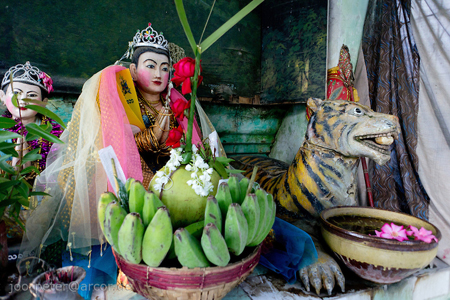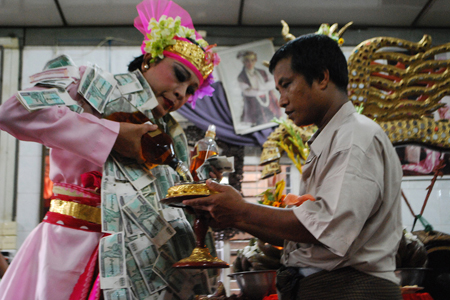Practice of Nat worship among almost all Buddhist races remained equal with Tri-Ratana (The 3 Jewelry) among them. There were higher classes Devas in Buddha’s Suttan (Lectures delivered by the Lord Buddha). Besides Burmese traditional Nats and Hindi Nats all mixed worship had widely been prevailing ever since. Actually this culture was not a new product at present age. It had long been prevalent in the old time during Burmese Kings dynasty. When there held monthly ceremonies, worship of Buddhism, Hindi bramanism and Nat worship still mixed worship. Regarding this practice prevail on so long, it is believed reasonably that king Abiraja of Indian race brought with him Indian culture such as coronation of ascending throne, wedding ceremony, cultivating ceremony at all auspicious ceremonies were being held under the guidance of Braman Ponnas, thus the role of Braman’s Hinduism and influence had widely rooted and overwhelmed in Burma.

Therefore in some of the Burmese occasions of noticing ceremony for the boys and ear-boring ceremony for the girls, and wedding ceremonies the practice of inviting Hindi Devas to ask for the blessing is still popularly going on in full force.
All of Burmese female Nat dancers worship Inside 37 Nats as well as Outside 37 Nats mixed. They also worship Hindi Nats together with Burmese Nats as well. Hindi Nats apparently such as, Thurathadi, Sandi prami, Letshmi and Maha Pein Hne were not Nats of Burmese origin, however, the people still used to worship up till now. The Braman Ponnas remained as King’s Prophets and adviser as long as throughout the ages, thus in the whole of Burma, it made nation-wide Nat worship rooted and developed in Myanma.

